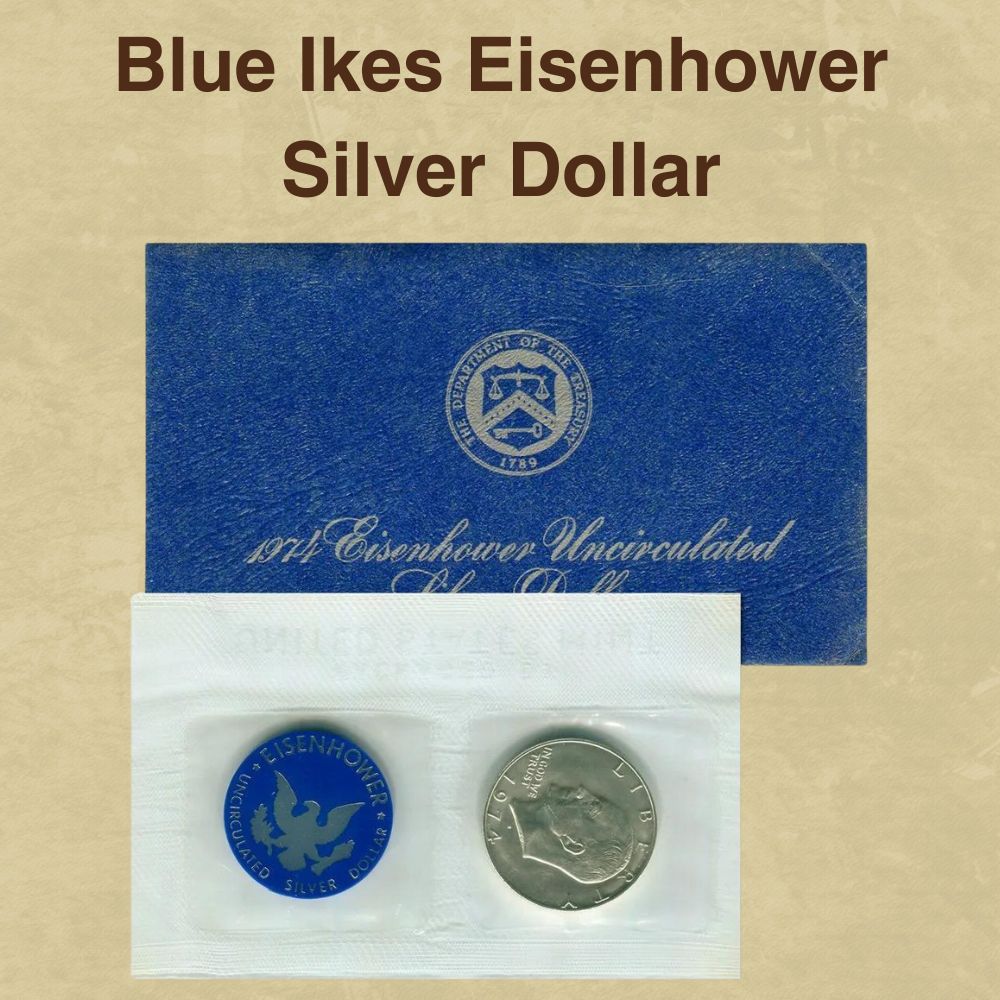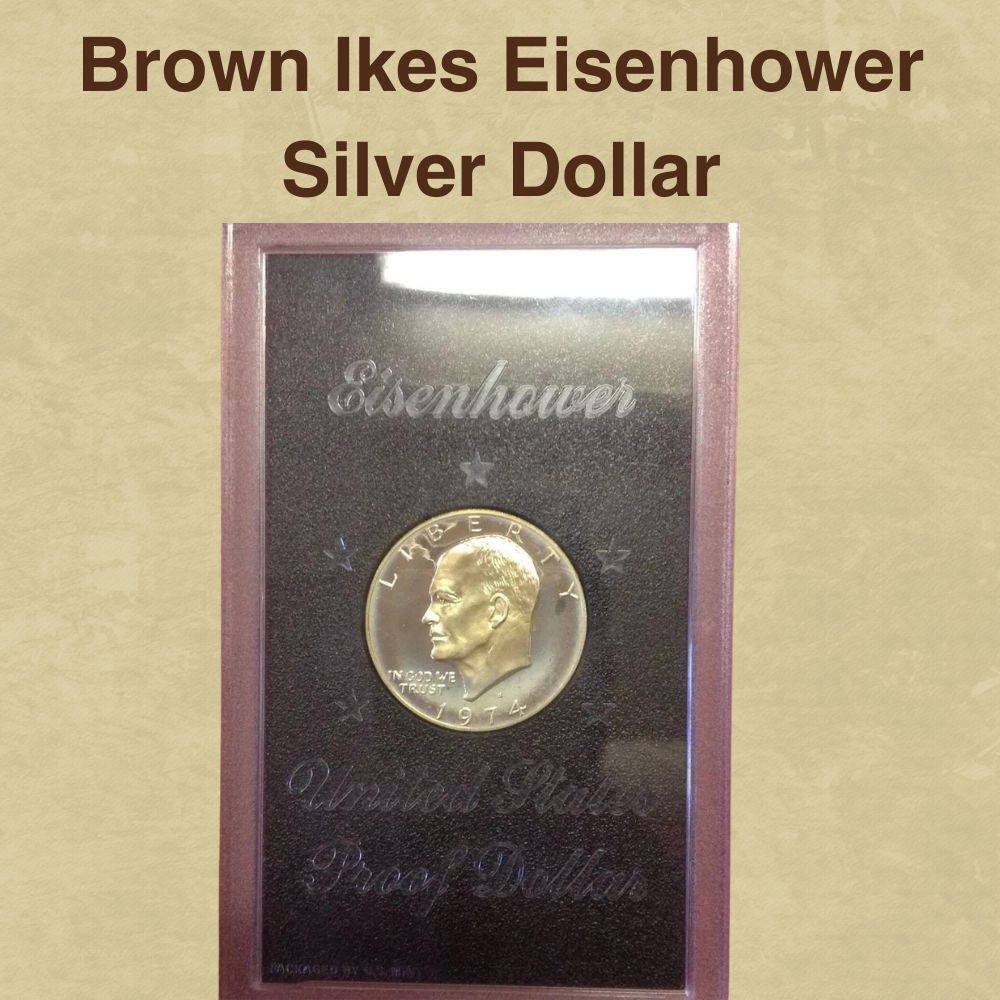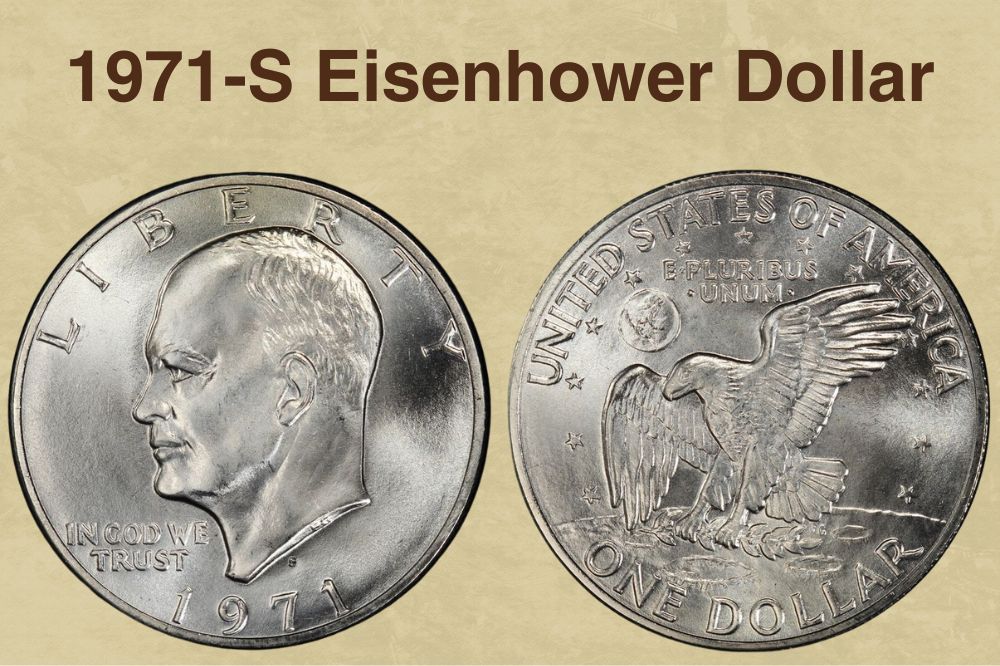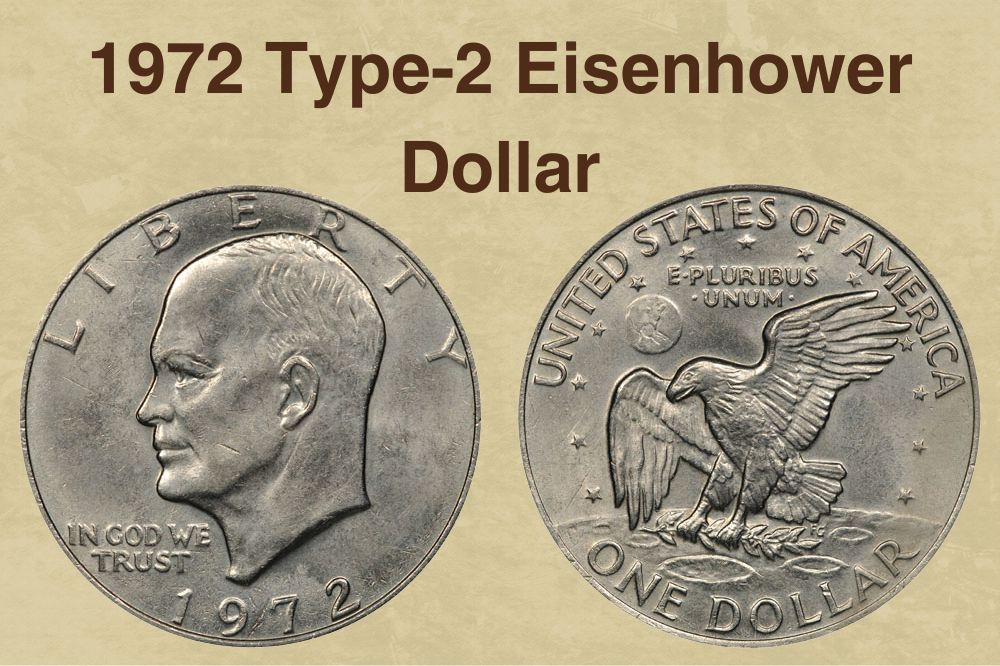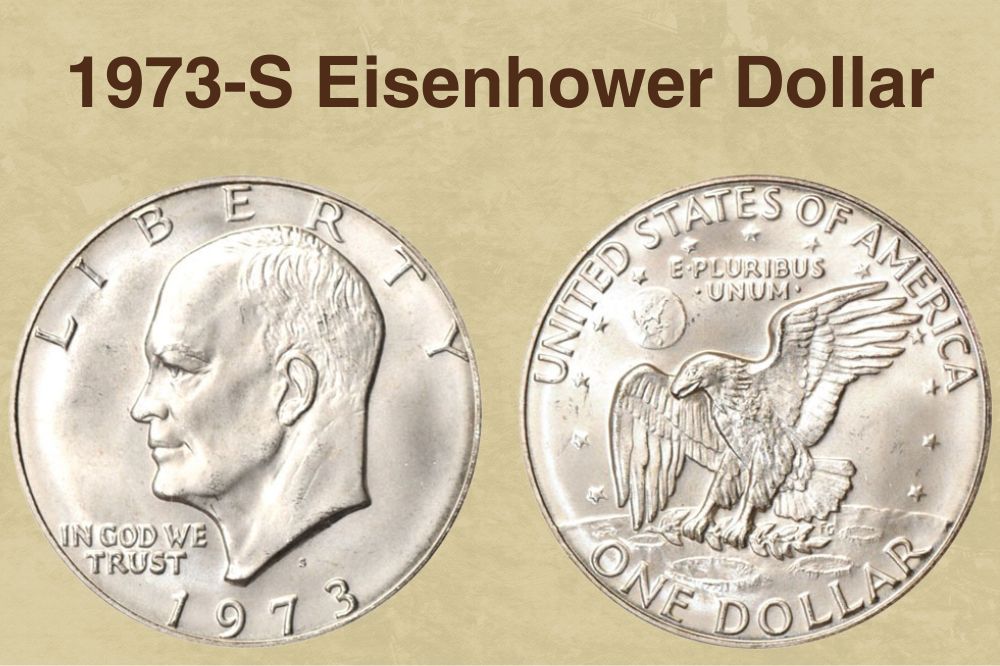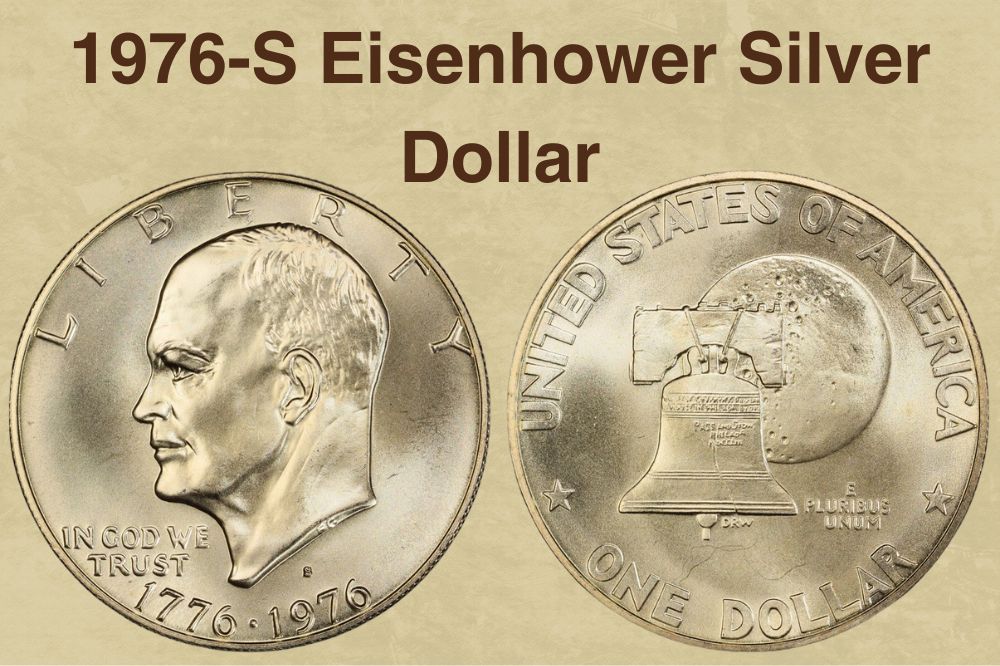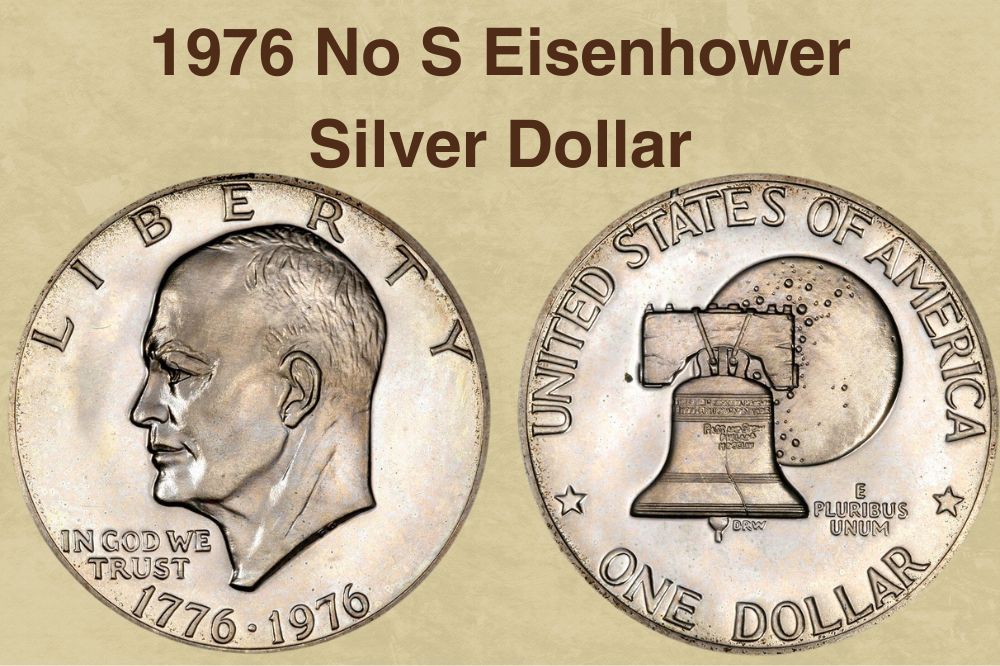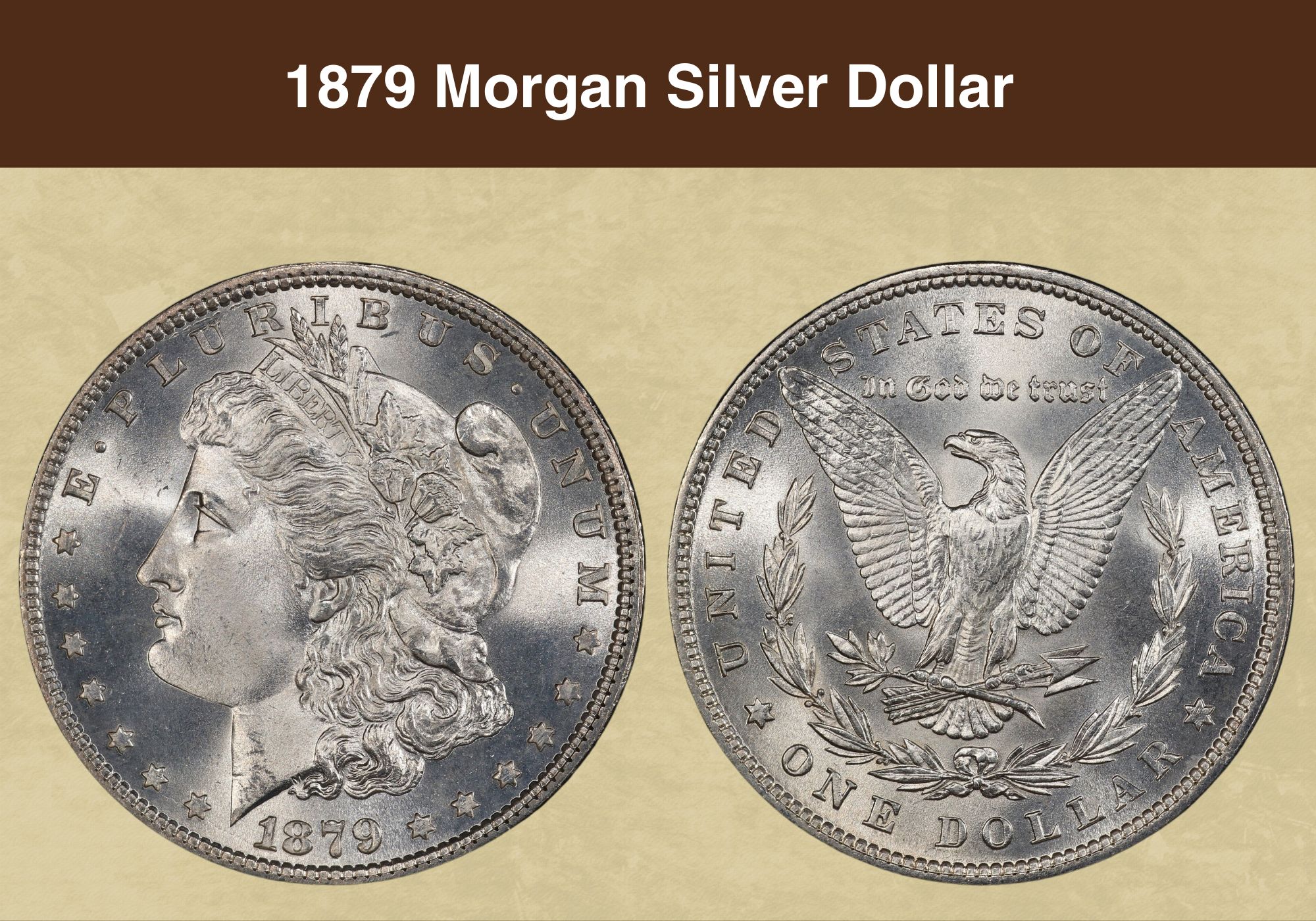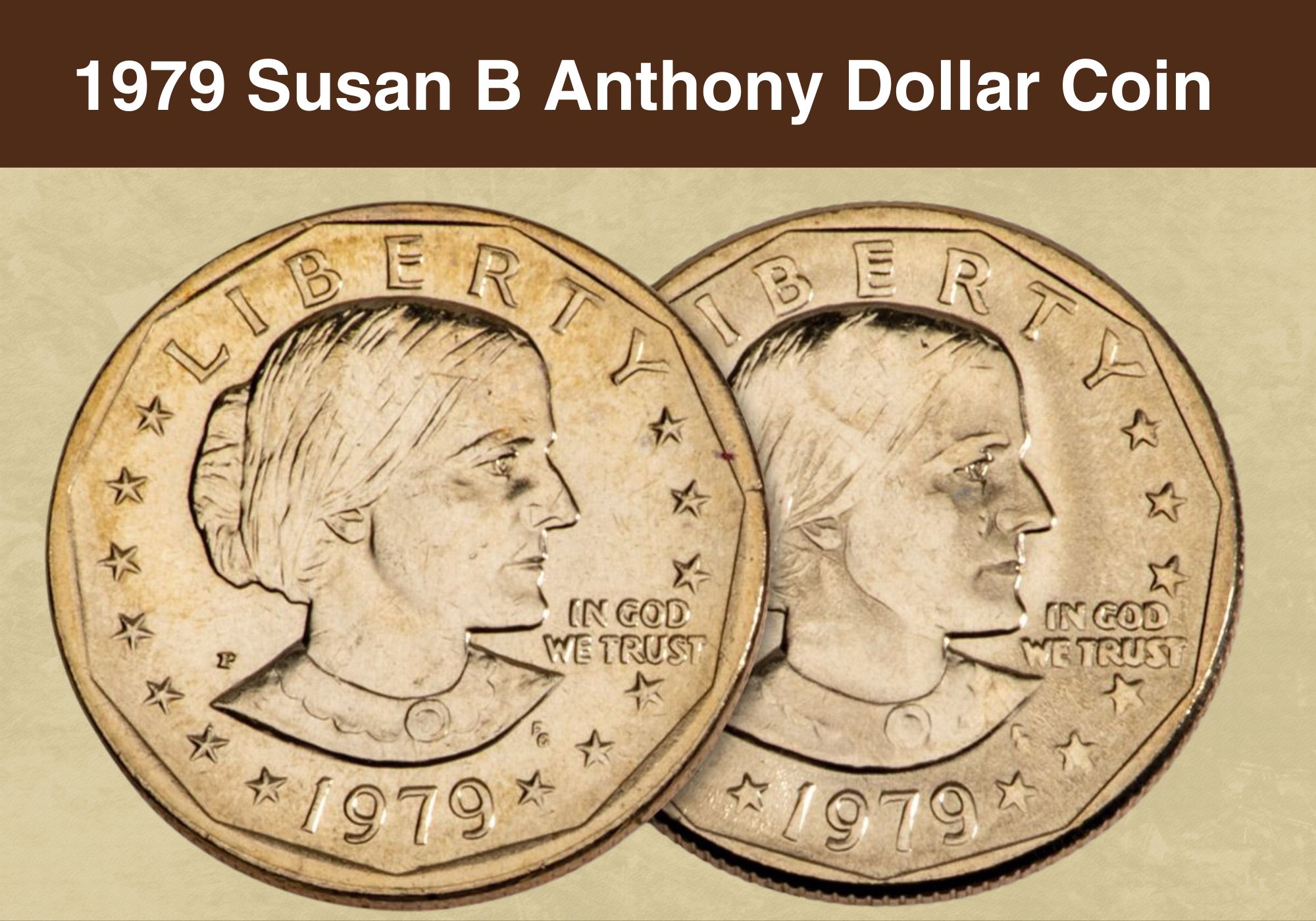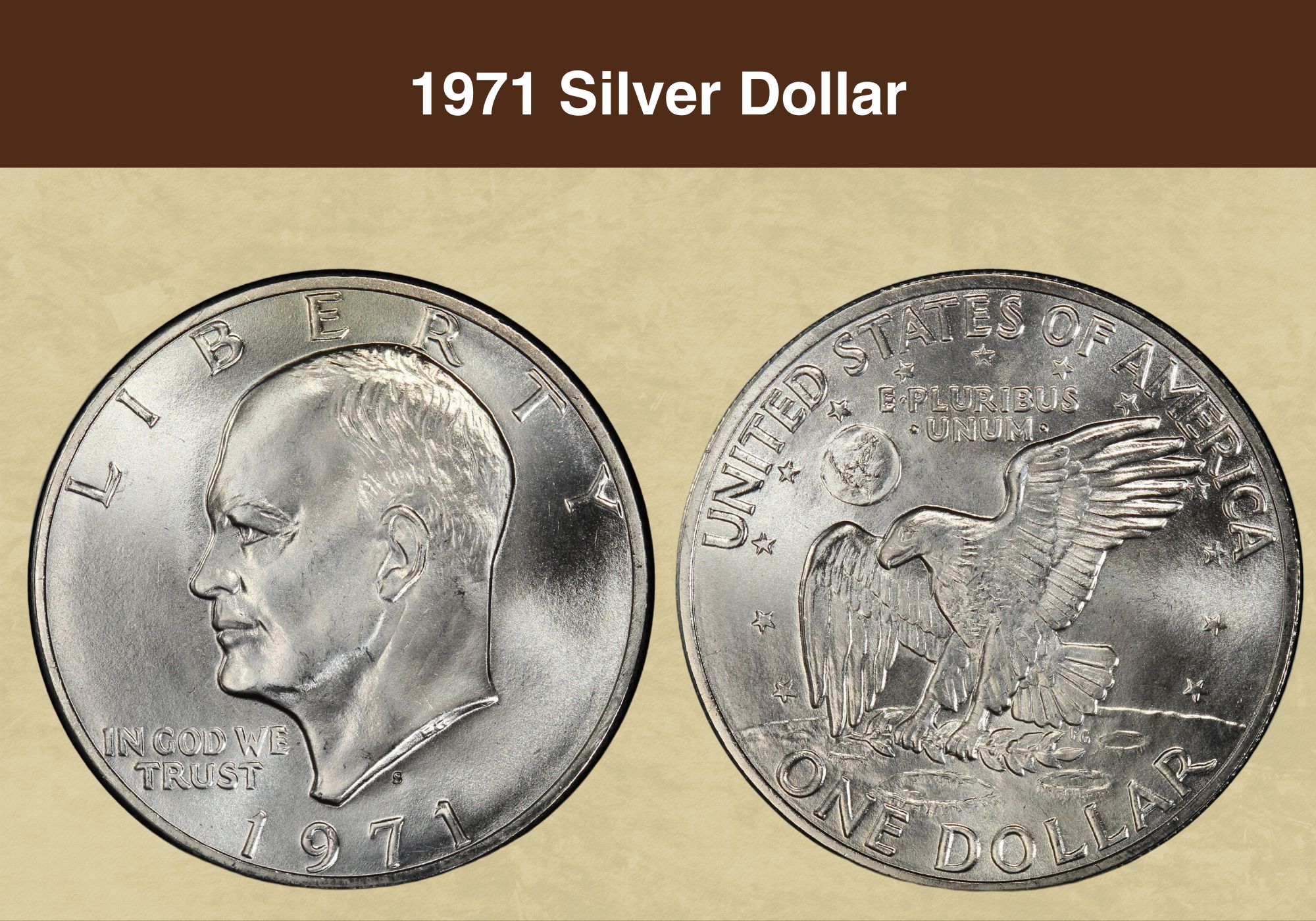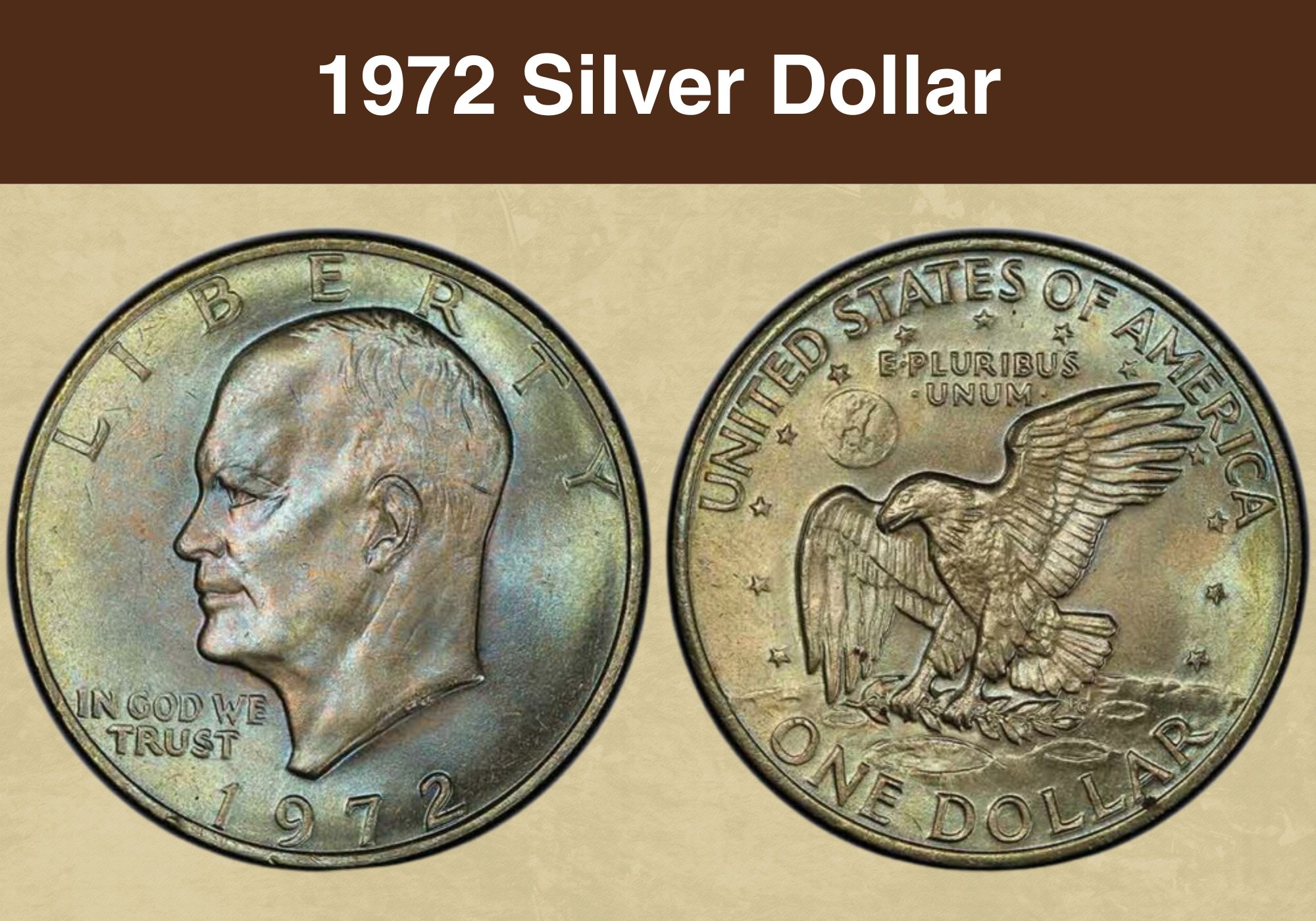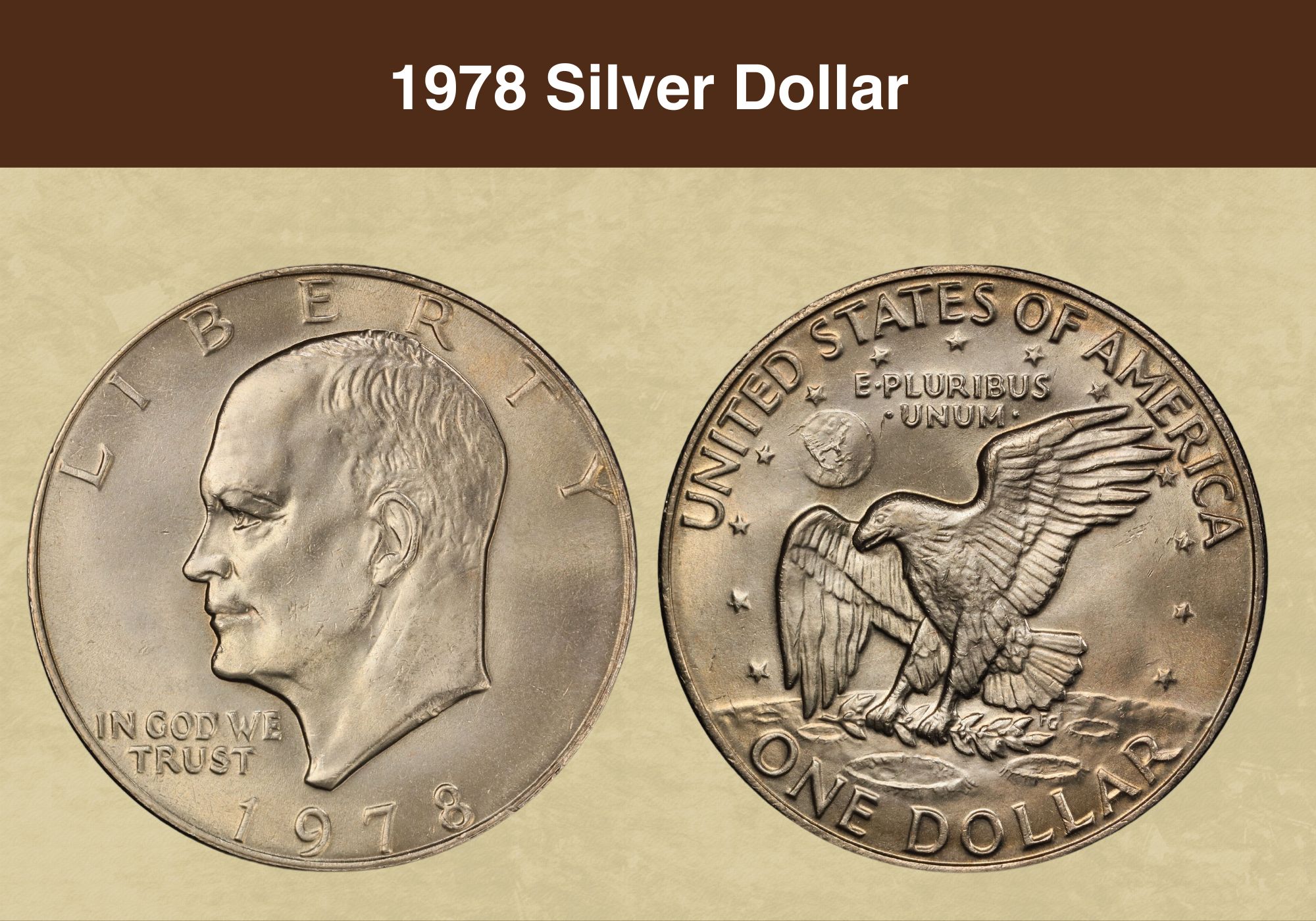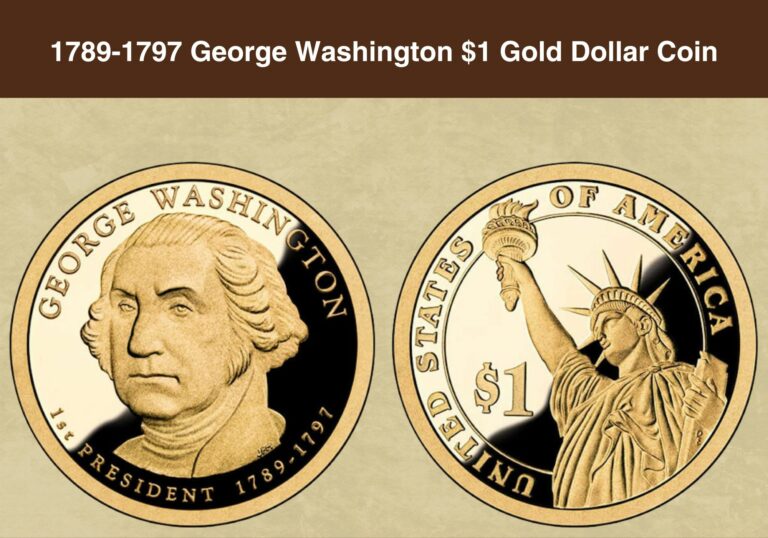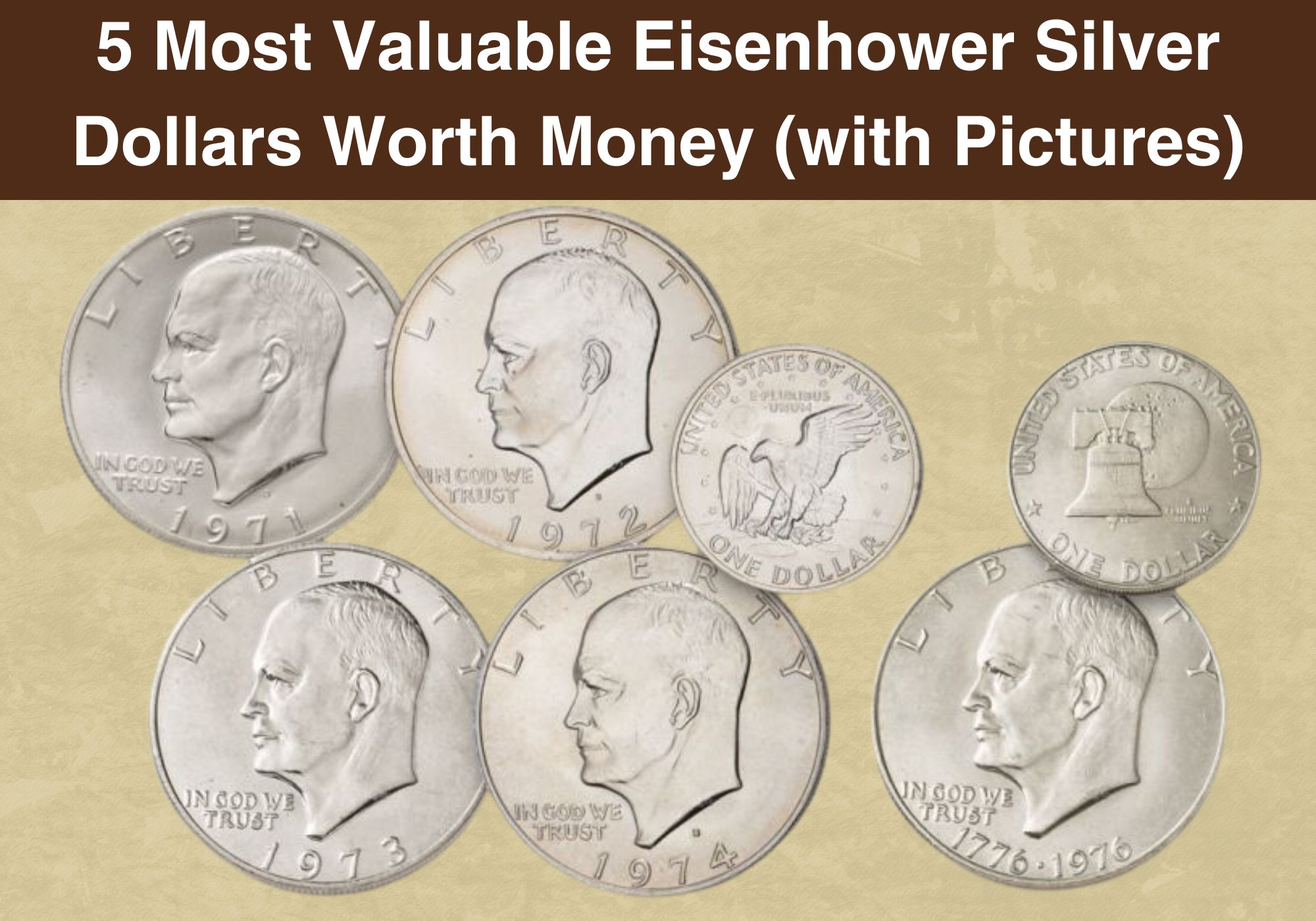
Coin Value Contents Table
Are you curious about Eisenhower silver dollars and how much they might be worth?
Although these large dollar coins were unpopular when they were first circulated, they are a collectors’ favorite today.
Silver Eisenhower dollars, in particular, are rare and are often offered at a premium. This explains why collectors are interested in adding these coins to their collections.
This article will explore everything you need to know about rare Eisenhower silver dollars. We’ll cover a bit of the coin history and the value of these rare, premium coins.
So, let’s dive in and get started!
The History of the Eisenhower Silver Dollars
The year 1969 is one of the most memorable in our country’s history. First, President Dwight D. Eisenhower passed away that year in March, and in July, we landed the first humans on the moon.
That same year, the Mint announced plans for the production of a new dollar coin. This gave Congress the opportunity to commemorate the two most historical events of the year. The Mint set preparations for the new coin in motion, officially launching the dollar in 1971 and running it to 1978.
The 1971 Eisenhower dollars were the first dollar coins the Mint had struck since 1935 when the Peace dollars were last produced. By the end of 1978, they also became the last large-size dollar coin.
Before the 1960s, silver prices had been stable, not exceeding 70 cents. However, in the decades that followed, bullion silver prices increased exponentially, prompting the Mint to consider new alloys for producing new coin currency.
In the face of the severe silver shortage, the Mint struck Eisenhower dollars in 40% silver with a copper-nickel outer cladding. The Philadelphia and Denver mints primarily produced silver-clad business strike Eisenhower dollars.
With the remaining limited amounts of silver, the Mint in San Francisco produced silver uncirculated and proof Eisenhower dollars. These coins have more silver than their business strike counterparts and are significantly more valuable and popular among collectors.
Eisenhower silver dollars spot the mint mark S and were made for collectors. They contain a core of 20% silver and 79% copper and an outer layer of 20% copper and 80% silver.
Features of the Eisenhower Silver Dollars
There are two categories of silver Eisenhower silver dollars. These are:
- Blue Ikes
- Brown Ikes
1. Blue Ikes
Ike was President Eisenhower’s given nickname. Blue Ikes are bullion uncirculated Eisenhower dollars distributed to collectors in mint blue envelopes, a tradition that gave the silver dollars their name, Blue Ikes.
Also inside the envelope were two silver and blue tokens, each featuring the U.S. Mint logo. All Blue Ikes spot an S mint mark on the obverse.
These collectors’ sets were initially sold at $3.
2. Brown Ikes
Brown Ikes refer to the proof version of the Eisenhower dollars containing 40% silver.
As the name suggests, the Mint sold these dollar coins in brown boxes made of faux wood. The outside of the boxes featured a gold-colored seal while the proof dollar coin was placed in a plastic casing housed in the box.
Like the Blue Ikes, the Brown Ikes also have an S mint mark on the obverse and were originally sold for $10.
Let’s now look at the features of the Eisenhower silver dollars.
The Obverse of The Eisenhower Silver Dollar
The sculptor Frank Gasparro designed the obverse imagery of the Eisenhower dollars. This side of the coin features the left-facing portrait of President and WW2 Army General Dwight D. Eisenhower.
The word LIBERTY is arched at the top of the coin along the inner rim. To the left, underneath Eisenhower’s chin, you see the words IN GOD WE TRUST.
The date appears at the bottom along the inner rim. In Bicentennial 1976 dollars, you will notice two dates—the first date represents the year Congress adopted the Declaration of Independence, while the other date represents the year the coin was released into circulation.
If you look closely, you will notice the sculptor’s initials, FG, etched on the portrait’s truncation. The mint mark also appears below the truncated bust. Eisenhower dollars only spot the mint marks D and S; those minted in Philadelphia do not have a mint mark.
Reverse of The Eisenhower Silver Dollar
When you turn the coin over, you find Michael Collins and James Cooper’s depiction of the Apollo 11 mission patch design, which embodies the historical moon landing.
The reverse portrait shows a descending bald eagle holding an olive branch in its talons. Above is a depiction of the planet Earth, while underneath is the lunar surface. The map of North America is also shown as part of the insignia.
Our country’s name, UNITED STATES OF AMERICA, appears boldly at the top along the inner rim. Directly opposite at the base is the coin’s denomination, ONE DOLLAR.
A ring of tiny stars encircles the bald eagle while the motto E PLURIBUS UNUM is etched above the eagle’s head. This motto translates to “Out of One, Many.”
Other Features of the Eisenhower Silver Dollar
The Eisenhower silver dollars are large coins measuring 38.50 millimeters and weighing about 24.60 grams. They have a reeded edge with ridges or grooves along the coin’s perimeter.
The coin’s center consists of 21% silver and 79% copper, while the outer layer is made of 80% silver and 20% copper.
Rare Eisenhower Silver Dollars
We’ll now explore the rarest and, subsequently, the most valuable silver Eisenhower dollars.
1. 1971-S Eisenhower Dollar
The U.S. Mint first produced proof and uncirculated Eisenhower silver dollars for the first time in 1971. These coins were generally very well-struck as the Mint used new dies to produce them.
The Philadelphia and Denver mints struck clad dollars while the San Francisco facility produced silver coins.
The silver coins proved to be more popular than the regular copper-nickel Ike dollars. By the end of the year, collectors had obtained as much as 7 million 1971 silver dollars in mint state.
The 1971-S Eisenhower dollar is relatively accessible in MS65 through to MS67; examples are plentiful and affordable in mint state.
That said, the 1971-S Eisenhower silver dollar is notoriously rare at MS68, with fewer than a dozen examples known to exist.
According to the Professional Coin Grading Company, the most valuable 1971-S silver Eisenhower dollar was sold for $6,900 at a 2012 Heritage Auctions sale.
Check 1971 Eisenhower Dollar History, Variety Price Chart, and Errors List
2. 1972 Type-2 Eisenhower Dollar
Next, we have the 1972 Silver Eisenhower dollar. This coin has three varieties—Type 1, Type 2, and Type 3. The scarcest of them all is the Type 2 silver dollar.
So what’s special about the Type 2 1972 Eisenhower dollar? Well, mint workers (probably accidentally) struck this coin with one reverse die meant for striking the Proof version. This is the main reason why there are such few 1972-S Type-2 Eisenhower dollars compared to other dates in the series.
The Type 2 1972 Eisenhower dollar is exceptional in other ways. For example, while the Type 1 and Type 3 varieties show some islands below the map of Florida, the islands are completely flat and invisible on Type 2 coins.
It is likely that there are fewer than 40,000 1972 Type-2 silver Eisenhower dollars. Most are circulated and unrecognizable, and many others have been lost.
In MS65, the 1972 Type 2 Eisenhower silver dollar is very difficult to find and is obtained at a premium. In grade MS66, this coin is virtually impossible to come by and will, unsurprisingly, command high prices.
The most expensive specimen was graded MS67 and sold for an impressive $5,750 in a 2005 Heritage Auction sale.
Check 1972 Eisenhower Dollar History, Variety Price Chart, and Errors List
3. 1973-S Eisenhower Dollar
The 1973-S Eisenhower dollar is readily available in mint states MS64 to MS67; you can easily and affordably obtain these uncirculated dollar coins. However, examples in MS68 are harder to come by and are scarcer in MS69.
Proof specimens are also of excellent quality from PF67 to PF69 Deep Cameo (DCAM). DCAM gem examples graded PF70 are available but exceptionally rare.
In 2008, a collector paid an astonishing $40,250 for a 1973-S proof Eisenhower silver dollar graded PR67. Other examples in cameo and deep cameo have been sold for $9,488 and $17,250, respectively, making the 1973-S silver Eisenhower dollar highly valuable.
Check 1973 Eisenhower Dollar History, Variety Price Chart, and Errors List
4. 1976-S Eisenhower Silver Dollar
In 1976, the coin design for Eisenhower dollars changed slightly to commemorate the United States Bicentennial anniversary.
The obverse design didn’t change much; the Mint only added the date 1776-1976 to denote 200 years of independence.
The reverse saw some significant design changes that set apart the Bicentennial silver dollars from the other regular Eisenhower silver dollars. The design shows an image of the Liberty Bell superimposed on the moon with the motto, E PLURIBUS UNUM, shown to the right.
The designer, Dennis R. Williams, placed his initials along the Bell’s lower edge. The words UNITED STATES OF AMERICA are etched on the upper rim while the coin’s denomination, ONE DOLLAR, appears at the base. Two stars are shown on the left and right of the coin’s reverse side.
The 1976-S Eisenhower silver dollar is a one-year type of coin. It is also different from other Bicentennial coins struck that year as it is mainly composed of silver, while the others have a clad metal composition.
This was also the last year the Eisenhower dollar was struck and marked the end of the large dollar coins.
Uncirculated examples of 1976-S Eisenhower silver dollars graded MS65 are common and easily accessible in terms of affordability. Their population begins to dwindle to about tens of thousands at MS66 to MS67 and then to less than 1,000 in MS68.
A collector paid an enviable $20,300 in a 2023 eBay auction for a 1976-S Eisenhower silver dollar graded MS69, a very rare specimen.
Check 1976 Eisenhower Dollar History, Variety Price Chart, and Errors List
5. 1976 No S Eisenhower Silver Dollar
In addition to the 1976-S Silver Eisenhower dollar, the Mint also produced a Bicentennial silver dollar with no mint mark, also known as the 1976 No-S Proof Eisenhower silver dollar.
All coins struck at the San Francisco mint at the time bore the mint mark S. However, it is believed that for some reason, one of these coins missed the mint mark, making it one of the rarest, if not THE rarest, Eisenhower silver dollars.
The No S 1976 silver dollar boasts a value of about $850,000, cementing its place as the rarest Eisenhower silver dollar.
The U.S. Mint struck Eisenhower silver dollars from 1971 to 1976. Remember that only proof and uncirculated coins, minted in San Francisco, were made out of silver, while the Philadelphia and Denver facilities produced clad dollars.
History, Variety Price Chart, and Errors ListCheck 1976 Eisenhower Dollar
FAQS
Why is a 1971 Eisenhower silver dollar worth so much?
In 1971, there was a lot of anticipation among the public and collectors who eagerly awaited the new Eisenhower silver dollar. It was the first time since the 1930s the Mint was producing silver dollar coins. When the 1971 Eisenhower silver dollars were made available, collectors hoarded them in large numbers, snapping them out of the market. Today, many of these proof and uncirculated coins are lost or too worn, making them a true rarity. Finding a 1971 Eisenhower silver dollar can be very challenging, making this coin worth hundreds or thousands.
How can I tell if my Eisenhower Dollar is silver?
Your Eisenhower is made out of silver if it bears an S mint mark on the obverse. The S symbolizes San Francisco, where the Mint struck these coins. Only silver Eisenhower coins dollars were struck at this facility. The Philly and Denver mints produced clad dollars, and only those from Denver show the respective mint mark, D on the reverse; Philadelphia Eisenhower dollars do not show a mint mark.
Can you still get Eisenhower silver dollars at the bank?
No, you cannot. The U.S. Mint last produced Eisenhower silver dollars in 1976 and, by 1978, had completely stopped minting Eisenhower dollars in general. The last Eisenhower dollars were issued to the Reserve Bank, which distributed these last pieces to banks. Since the U.S. Mint no longer mints Eisenhower dollars, the Reserve Bank doesn’t have any to distribute to the banks.

